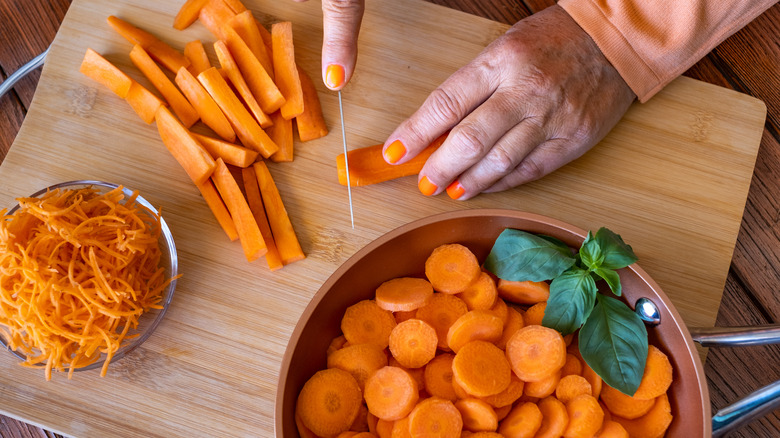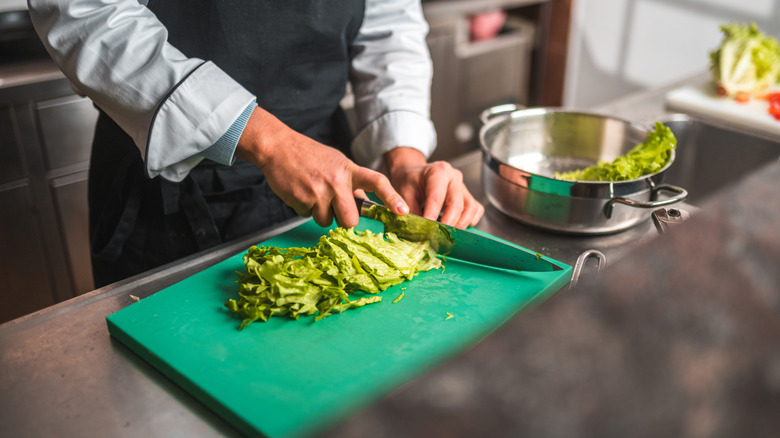Chopping Salad Ingredients Properly Is More Important Than You Think
While it seems like a relatively simple thing, the truth is that there is an art to making salads. One key factor to consider is how you chop up different salad ingredients, as the size of carrots, cucumbers, and other goodies can impact how easy it is to get a full forkful. In this case, keep separate ingredients the same size when cutting, as similarly-sized veggies will be much easier to pierce with your fork as you eat.
For the best results, chop your salad ingredients separately, as this will give you greater control over the final size. As for what type of cutting implement to use, a chef's knife is an excellent choice when dealing with particularly fibrous veggies like carrots. When working with something like a big, juicy tomato, grab a bread knife or serrated paring knife, both with a serrated edge that will cut the vegetable cleanly and uniformly. In the event you need to peel the skin off a veggie or fruit, such as a cucumber, the small but humble paring knife works especially well. Unlike fancy kitchen gadgets that aren't accessible to every home chef, these knives are standard in most people's cooking arsenals.
Which technique should you use when chopping vegetables?
Using the right type of cutting tool gives you greater control over the size of salad ingredients, but there are also a wide variety of cutting techniques for you to choose from. Basic slicing is one easy option that most home chefs can handle, as it's relatively easy to keep ingredients the same size when slicing. However, make sure your knife is sufficiently sharp to avoid injuries and make for the most efficient salad prep process.
If you're seeking a fancier presentation, the julienne cut is perfect for you. This method cuts veggies into a stick-like shape that is usually about three inches long. After breaking down the vegetable or fruit into a manageable size, cut it into wide planks. Next, cut the planks into smaller sticks. You can ensure the produce maintains a uniform size by stacking the planks on top of one another and cutting through many at once, a method that also greatly boosts your efficiency when making a salad.
What about lettuce and other leafy greens?
Cutting techniques can vary quite a bit based on the type of salad ingredient you're working with. When it comes to leafy greens, consider the chiffonade cut. It also works well with herbs, as you slice leaves into thin ribbons to ensure the perfect bite each time. To chiffonade, stack leaves on top of each other, then roll the stack from the bottom. Place your knife at the top of the roll and cut downward, then repeat down the length of the stack until you have a collection of evenly sized ribbons.
If you're breaking down an entire head of lettuce at once, there's a more efficient chopping option you can use. Rinse the lettuce and remove any wilted or damaged outer leaves. Next, remove the core with your knife and slice the head of lettuce in half. Take one half and position it so the flat side is flush against the cutting board. For chunky chopped pieces of lettuce in your salad, cut from left to right, then position the lettuce at an angle and cut again, going from one side to the other. Repeat the process on the remaining half head of lettuce to ensure perfectly sized salad ingredients.


